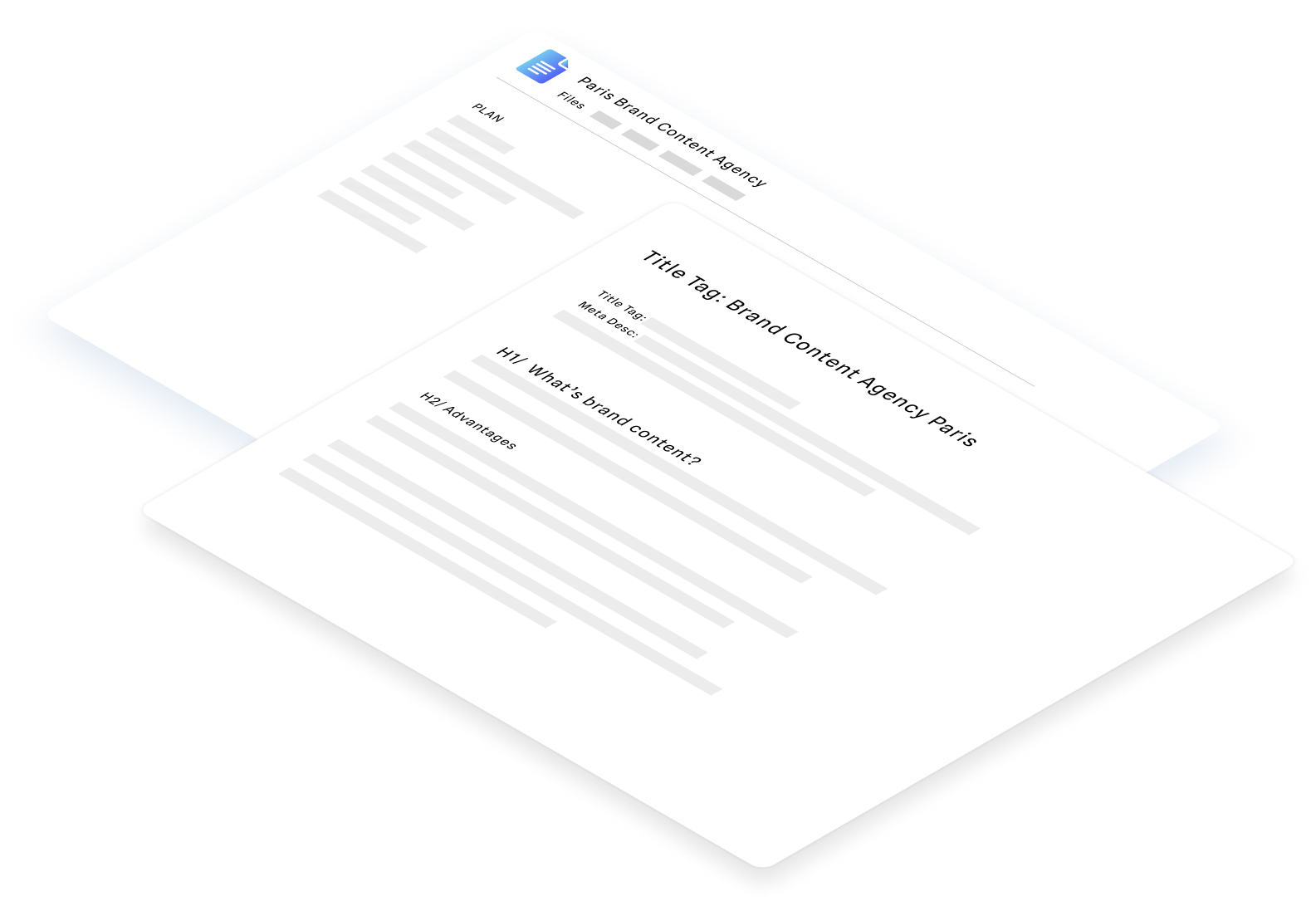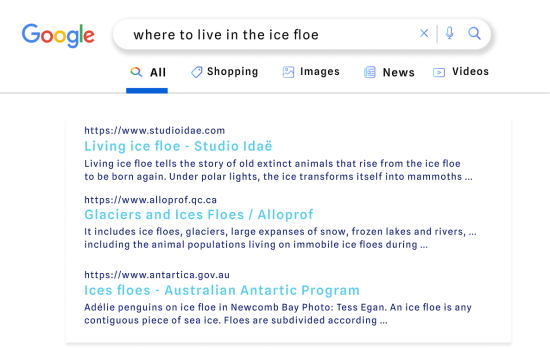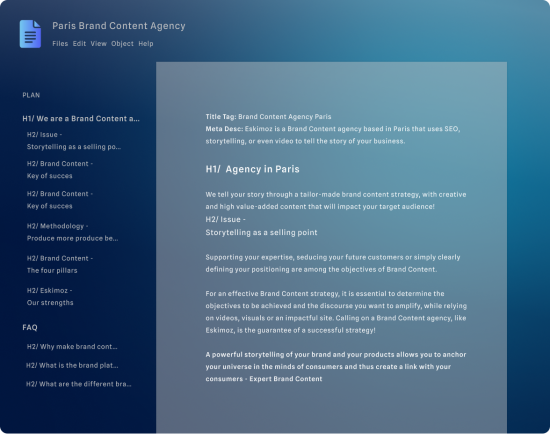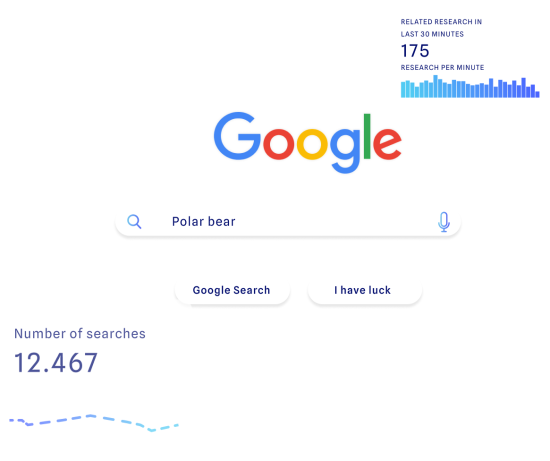
Web Copywriting:
Creating Effective and Optimised Content
Web copywriting is the art of crafting content that is tailored to digital constraints and often optimised for search engines.

What exactly is web copywriting?
Web copywriting:
a definition
Web copywriting is the discipline of writing content intended for publication and consumption on the internet. However, this practice comes with a unique set of constraints to adhere to and composition rules to understand. Behind the term “web copywriting” lies a complex reality, distinct from the guidelines that govern print media writing or journalistic writing. The goal here is to publish content that caters both to internet users who will read it and search engines that will index and position it in their results list (thereby making it visible). In other words, writing for the web involves simultaneously meeting the demands of online consumption and the criteria for search engine optimisation – this is where web copywriting intersects with SEO.


Why choose web copywriting?
Web copywriting serves as the foundation of content marketing, a strategy that revolves around creating and publishing highly valuable content. But why should you consider web copywriting? What benefits can this strategy offer you?
-
Improve your SEO
Search engines, particularly Google, highly value quality content. They prioritise and showcase it prominently in SERPs, thereby boosting your SEO.
-
Target keywords
The more web content you publish, the more keywords you can target, increasing your chances of ranking pages in search engine results.
-
Generate traffic
The visibility gained through your content contributes to generating traffic to your website, whether it’s from search engines or other acquisition channels.
-
Publish engaging content
Google loves active websites, and regular content publication adds freshness to your site, capturing the attention of search engine bots.
-
Encourage interactions
Web copywriting aims to engage and elicit responses from internet users, fostering interactions and encouraging content sharing on social networks.
-
Boost conversions
Content serves a dual purpose—not only does it attract traffic, but it also caters to users at different stages of readiness, guiding them towards conversion.
-
Establish authority
Publishing expert content helps establish your company/brand as an authoritative figure in its industry, positioning you as a market leader.
-
Foster user loyalty
Content can also be utilised for customer retention purposes, such as newsletters or exclusive premium content for your clients.
-
Maximise ROI
Content marketing stands out as one of the most cost-effective strategies, being 62% less expensive than traditional marketing (DemandMetric).
Writing tailored to the constraints of the web
The uniqueness of web copywriting lies in its exclusive digital publishing platforms, such as websites, blogs, social media, and emails. As a result, writing “for the web” needs to consider the specific constraints imposed by the online landscape, which can be grouped into two categories: how content is consumed and the need to appeal to search engine algorithms for visibility.
-
Consumption constraints
Consuming content on the web differs from traditional physical mediums. Digital writing must adapt to the way content is consumed: quick scanning, mobile browsing, frequent interruptions, and more. This calls for well-structured and properly organised content that highlights essential information, employing concise sentences and accessible terms.
-
Algorithmic requirements
In addition to targeting internet users, web copywriting also addresses the algorithms used by different channels. Search engines, in particular, rely on crawler robots to discover, comprehend, index, and rank web pages. Therefore, the structure, data hierarchy, and utilisation of SEO techniques (HTML tags, microdata, etc.) are essential for success.
Is web copywriting always “SEO”?
Web copywriting and SEO are often seen as intertwined. However, web copywriting can also be used independently, without solely focusing on SEO aspects—especially when the content is not intended for search channels. For example, white papers or case studies used as lead magnets (downloadable documents on landing pages to generate leads), press releases sent to media outlets, or even email campaigns (newsletters, promotional offers, etc.). In such cases, while still adhering to web requirements, writing can be liberated from the constraints related to SEO optimisation.

How to prepare web copywriting content
Preparing your content: who – and what – are you writing for?
At the heart of web copywriting lies your target audience: the people you choose to write content for, including prospects, clients, partners, journalists, the general public, experts, and more. It’s crucial to understand your readers and define the key elements of the content you want to offer them, aligned with your marketing objectives. In this section, we’ll focus on two essential aspects of preparation that are integral to web copywriting: identifying the intended consumers of the content once it’s published and determining the content’s core message.

Choosing your target audience: the role of personas
Who is your target audience? Since it’s impossible to address everyone simultaneously, in marketing, “personas” are used: customer profiles that aim to represent a specific segment of the target audience. Each persona, based on your understanding of your ideal customers, varies depending on the nature of the target (B2B or B2C). It considers characteristics such as demographics, location, interests, online behaviour, industry (for businesses), and even the customer’s stage of maturity. Web copywriting can tailor its content to consumers based on their position in the buying journey, whether they are in the discovery, consideration, or decision phase. The level of maturity influences the challenges faced by the target audience, the type of solutions to offer, and even the tone and format of the content written for them.
Selecting relevant keywords for content
In many cases, web copywriting focuses on creating content that will appear in search engine results. As a crucial and indispensable step in content preparation, it’s important to understand how internet users search for information on platforms like Google. Specifically, you need to determine the keywords they use when entering search queries in order to find what they’re looking for. These keywords are then identified, organised, and strategically incorporated into your content based on the topic, desired goals, and the search intent you aim to fulfil. There are various methods to identify these relevant keywords.

Quels sont les piliers de l’optimisation seo ?

-
Your business
Start by considering your business, products/services, and values to identify relevant keywords to use in web copywriting.
-
Your target audience
Put yourself in the shoes of your target audience: How do they search for information? What terms do they use on Google? What topics are they interested in?
-
Your sales team
Engage your sales team and gather insights from them regarding frequently asked questions by customers. These insights can serve as a solid foundation for finding relevant keywords.
-
Your competitors
Take a look at what your competitors are doing: Which keywords are they targeting? Which pages are achieving the most success? Learn from their strategies.
-
Tools
Make use of professional keyword research tools. There are numerous options available, such as Google Keyword Planner, Moz, SEMrush, Answer the Public, and more.
-
Trends
Explore Google Trends to understand the current trends surrounding your industry or specific products/services. This can help you identify key expressions to incorporate into your content.
-
Picking the right topic and choosing the right format
Web copywriting involves more than just writing blog articles. In fact, this discipline encompasses a wide range of formats, from simple and concise ones like emails and product descriptions, to longer and more complex ones such as white papers and ebooks. It also includes intermediate content with high added value, such as blog posts, case studies, interviews, expert opinions, press releases, and strategic website pages. The choice of format depends on various factors, including the target audience, the message to be conveyed, the topic to be addressed, and the specific purpose of the piece. For example, a company-related news topic could be presented as an article, an email, or a press release, while a testimonial about the use of B2B software might be best suited for an interview or a case study
Good to know
If you decide to work with a web copywriting specialist, there’s a valuable and indispensable tool to guide them in their writing process: the writing brief. This document contains all the relevant information that can assist the writer in creating the most relevant content for your needs. It typically includes an introduction to the company and the project, the specific topic to be covered, the desired format, keywords to be incorporated, the preferred tone, and more.
How to write web-optimised content
Always keep your target audience in mind when writing
In web copywriting, don’t overlook the “writing” part. It may seem obvious, but it’s crucial to remember that a few years ago, it was acceptable to create low-quality content for the sole purpose of appeasing search engines, which had lower standards back then. However, nowadays, web copywriting is primarily aimed at internet users. This aligns perfectly with Google’s goal of valuing well-crafted, relevant, and highly valuable content for those who consume it.

Offer content tailored for digital reading
Part of focusing on your target audience involves understanding their online reading habits. It’s estimated that internet users have an attention span of no more than 8 seconds. This means that content must be well-structured, clear, and concise, avoiding overwhelming readers while enabling them to grasp important information. Content hierarchy is key here: effective use of headings and subheadings (H tags), bullet-pointed lists, concise paragraphs, an inverted pyramid structure (placing the most important ideas first), and more. As for length, it depends on the format: a blog article typically ranges from 600 to 1,000 words, strategic pages like the homepage or service descriptions can have around 500 to 600 words, while product descriptions usually suffice with 300 to 400 words. However, in-depth reports or white papers may well exceed 3,000 words.
Expanding your content: essential aspects of web copywriting

-
Step 1
Introduction and conclusion
Considering the limited attention span of web users, it’s highly likely that they will only read the introduction and conclusion of your content. It is, therefore, crucial to craft these sections carefully. The introduction should provide an overview of the topic to be discussed and highlight the key issues that the content will address. The conclusion should summarise the main points covered and emphasise the key takeaways.
-
Step 2
Headings and subheadings
Similarly, typical readers tend to skim through content, focusing on headings and subheadings as they visually stand out and provide insights into the content’s main points. Therefore, it’s important to give them extra attention, making sure they are clear, concise, and informative (while still leaving room for exploration). From an SEO perspective, incorporating relevant keywords into headings and subheadings is beneficial.
-
Step 3
Semantics and optimisation
Let’s not forget that web copywriting also caters to search engine robots. Semantic optimisation involves expanding the text by incorporating a variety of terms related to the topic (derived from the semantic field). This helps provide context to the main query and enhances search engines’ understanding of the content, enabling them to present it to users in the most relevant context possible.
-
Step 4
Reviewing and editing the content
Taking a step back is important in web copywriting. Once the content is finished, it’s best to let it rest for a while and then come back to it with a fresh perspective. This allows for a better identification of errors, such as spelling, grammar, and syntax, as well as a chance to reflect on its overall structure and relevance. Is the structure coherent? Do the ideas flow logically? Does the content meet the needs and expectations of the target audience? Is it of high quality and relevance? A helpful approach is to have competent individuals in the relevant field review the content and provide feedback. Then, it’s simply a matter of optimising it!
How to optimise web copywriting for SEO?
SEO:
a must for appearing on Google
Web copywriting doesn’t always have an SEO focus. However, when this aspect is integrated into content production, optimising it becomes essential. This is what sets apart content that users come across in their searches (and are likely to click on) from content that remains buried in the depths of the search engine results page without attracting any visitors. In fact, Ahrefs estimates that 90% of web pages never receive organic traffic from Google! Therefore, incorporating SEO principles into web copywriting is crucial. In this section, we will explore the key steps to optimise content for search engine results, with a primary focus on Google.

Steps for optimising web copywriting content
Optimised web copy is enriched to provide vital information to search engine robots during the crawling process. Here are the main steps to follow in SEO web copywriting.

-
Step 1
Optimising meta tags effectively
Meta tags play a crucial role in providing a clear understanding of the page’s content. These tags are visible in the SERP, where the meta title appears in blue below the URL, and the meta description is the block of black text positioned just below the title. Among these tags, the title tag holds the highest importance and must absolutely include the primary keyword.
-
Step 2
Completing other HTML tags
A web page contains various useful tags that greatly contribute to SEO. Among them, the Hn tags, representing headings, are particularly significant. They assist in organising the content and provide valuable information to crawling robots. It’s also essential to remember to fill in the “alt” attributes of images, as they allow the bots to interpret the visual content.
-
Step 3
Optimising the page’s URL
Although often underestimated, the URL plays a vital role. As the page’s address, it offers relevant insights to the bots regarding the content it holds. It’s crucial not to rely on the CMS to automatically generate the URLs; instead, take control and ensure that the primary keyword is included while keeping the URL concise.
-
Step 4
Incorporating keywords into the content
Content optimisation involves maintaining a consistent presence of keywords throughout the text. The primary keyword should be present in the introduction and at least one subheading (Hn tag). As a general guideline, aiming for an ideal keyword density of around 1% (approximately one occurrence every 100 words) is recommended. However, prioritising semantic optimisation of the text is of utmost importance.
-
Step 5
Interlinking pages
Once your website has multiple pieces of content, it’s crucial to link them together. This is called internal linking and is essential for both search engine crawlers (which navigate through pages via links) and users (who are encouraged to explore more content on the site). Incorporating internal links is a fundamental aspect of web copywriting.
-
Step 6
Including outbound links
Outbound links, inserted within your page and pointing to external websites, demonstrate the expertise and informative nature of your content. They send positive signals to search engines. Prioritise links to reputable sources or informative sites, and consider configuring them to open in a new tab (so that users remain on your site).
-
Step 7
Optimising content images
The significance of images varies depending on the type of content. They are crucial for product listings on e-commerce sites and optional (yet visually appealing) for informative content. If you include images, ensure they have an optimal file size (to prevent page loading delays), provide descriptive titles, and fill in the alternative text (“alt”) attribute.
-
Step 8
Adding microdata to the content
Microdata, also known as structured data, is used by search engine robots to gain a better understanding of your content and receive instructions on elements to highlight. Integrated through schema.org markup, this data remains invisible on the website but can appear as Rich Snippets in Google’s SERP.
5 tips for writing SEO content
Our Commitment
-
Expertise
Since 2010, we have worked with over 2000 clients across 90 countries.
-
Passion
We are a team of passionate, industry-focused individuals who are committed to your success.
-
Performance
We’re committed to implementing a data-driven strategy, making a real impact on your bottom line by providing avenues for growth.
Any questions?
Web copywriting refers to the process of writing content specifically for online publication. This content can take various forms, including blog articles, emails, white papers, press releases, and more. It’s characterised by adhering to the conventions of writing for the web and often incorporates SEO elements. The purpose of web copywriting is to rank well in search engine results and drive traffic to the website.
Writing for the web requires following certain guidelines. It involves considering two primary audiences: internet users who are searching for specific information to address their needs, and search engines that index web pages and determine their rankings. Web copywriting involves mastering the conventions of digital writing and understanding SEO principles.
When content is intended to rank in SERPs, optimisation becomes crucial. Web copywriting goes beyond mere writing and involves strategically placing keywords within the content, appropriately filling HTML tags, structuring URLs effectively, optimising images, incorporating outbound and internal links, and adding microdata. A solid grasp of SEO techniques is essential for effective content optimisation.








